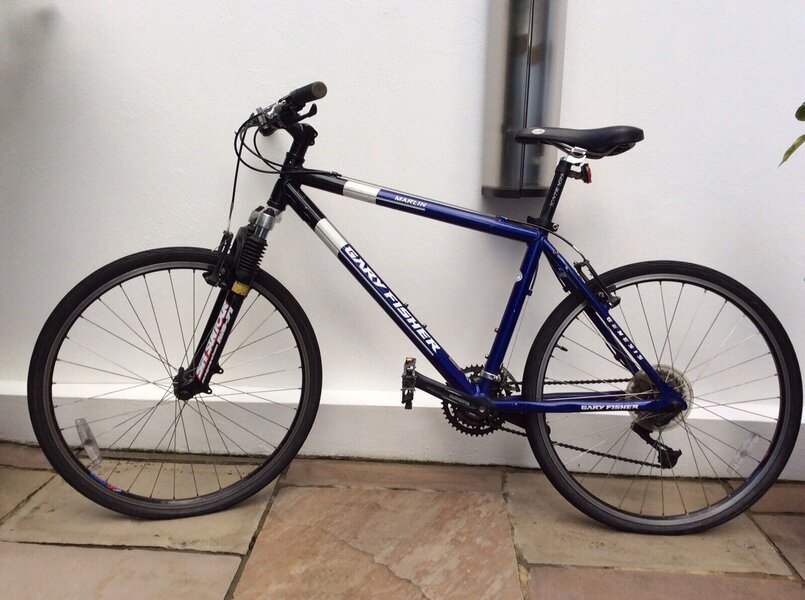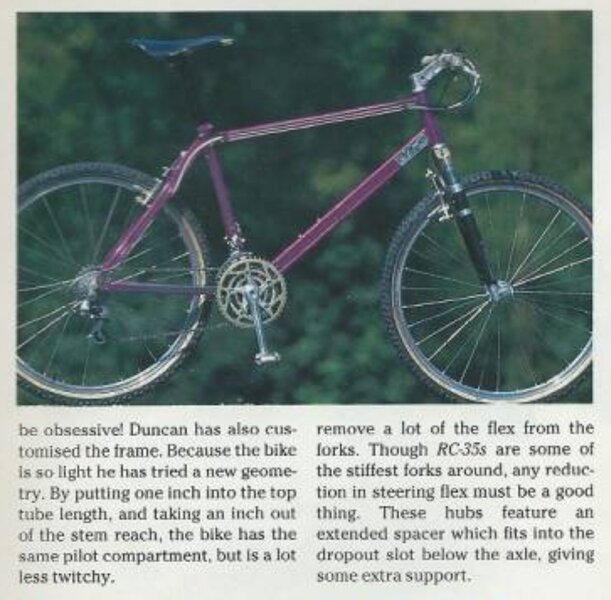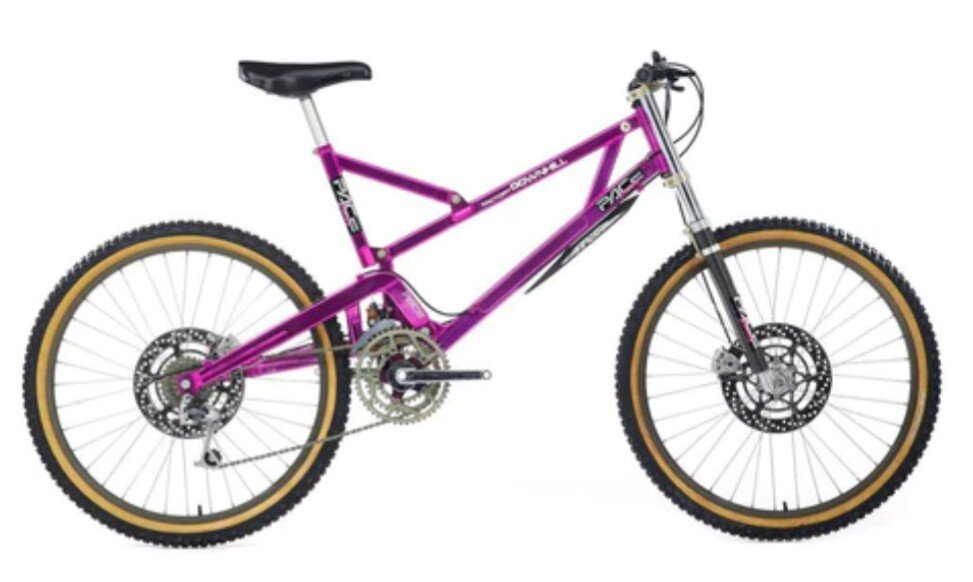2manyoranges
Old School Grand Master
- Feedback
- View
I‘ve just been meandering through the things which various inebriated people put on eBay last night but came across this rather nice photo of a Fisher which displays really well the way in which Gary Fisher was playing with geometry…the stirrings of the geometry which has had such an impact in the last decade. It’s always been a surprise to me that geometry changes so slowly. In this photo you can so easily see the way in which the top top has been stretched out, the head angle slackened a little, and the stem shortened. It was seen as ‘radical’ and yet ‘long low and slack’ took the ideas way further … even it took SO long to creep through into the mainstream. Before GF was stretching the front out, Marin already had taken what Joe Murray had started, and stretched their Team models‘ toptubes - the ti and nickel ones - without any comment or fanfare. But I noticed it when I built up a nickel steel Team in ‘96 - looked at the frame, scratched my head and got the tape measure out - and finding a tt two cms longer than the other Marin models was able to push the saddle forward to get the steeper seat tube which bikes of the time desperately needed for better climbing, and shorten the stem for better downhill performance. We still had steep head angles, though, and very short head tubes giving very low stack height. Yikes. Fast on the flat, superb up hill and although more stable on fast smooth downhills, very scary on drop offs.
Very few test mules were made at the time - testing different angles - which always surprised me. The geometry seemed to freeze in the 90’s. May be it was the lack of cnc and cad and sheer effort and cost of ’playing’, combined with the inherent conservatism of the MTB market. I think Keith B would have done more if he had been lonely and thoughtful in his garage rather than grappling with a Trek sell-out, and Chas Roberts and co might have done more if they had not been working flat out to meet demand. Even when in the early 2000s Mondraker pushed the envelope so successfully with their ‘Forward Geometry’ the industry laughed publicly but seemed to sneak back to their next years’ models and secretly tweak the angles a little - not a lot but a little - towards the stretched things I ride today. But this photo really nicely shows the influence of GF on emerging geometry. Many scoffed. A few didn‘t…and they were right….

Very few test mules were made at the time - testing different angles - which always surprised me. The geometry seemed to freeze in the 90’s. May be it was the lack of cnc and cad and sheer effort and cost of ’playing’, combined with the inherent conservatism of the MTB market. I think Keith B would have done more if he had been lonely and thoughtful in his garage rather than grappling with a Trek sell-out, and Chas Roberts and co might have done more if they had not been working flat out to meet demand. Even when in the early 2000s Mondraker pushed the envelope so successfully with their ‘Forward Geometry’ the industry laughed publicly but seemed to sneak back to their next years’ models and secretly tweak the angles a little - not a lot but a little - towards the stretched things I ride today. But this photo really nicely shows the influence of GF on emerging geometry. Many scoffed. A few didn‘t…and they were right….


